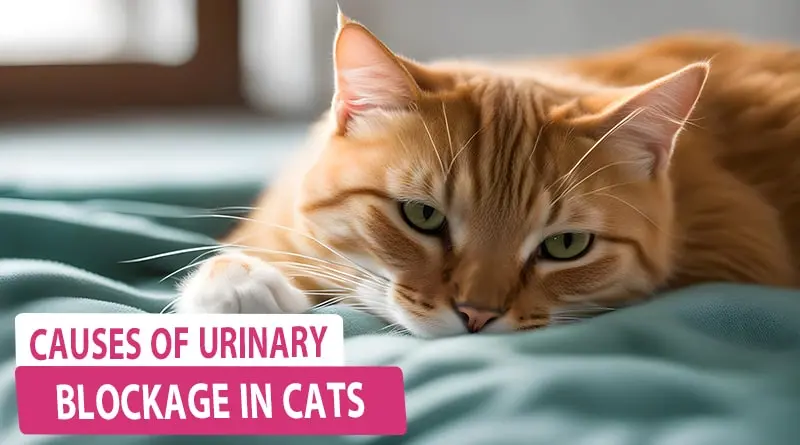Caring for your beloved feline friend means being prepared for every step of their recovery. If you have a small head cat, you may be wondering how to care for them after their catheter has been removed. Here is the true and short answer to Cat Catheter Removed Recovery Questions:
What to expect after Cat has Catheter Removal?
“The cat is monitored for several hours after the Catheter is Removed. Veterinarians may prescribe medications to help manage pain and anxiety. Medications may include urethral relaxants.”
In this article (Cat Catheter Removed Recovery Questions), we will address some common questions that pet owners have about cat catheter removal recovery.
What to Expect After Cat Has Catheter Removal?

Cat Catheter Removed Recovery Questions is a significant step in your Cat’s recovery process. After the Catheter has been removed, you can expect your furry companion to undergo a period of adjustment. Here are some things to keep in mind:
- Increased Urination: It is usual for your Cat to pee more frequently after catheter removal. This is because their bladder is now functioning normally, and they may need to empty it more often.
- Behavioral Changes: Your Cat might exhibit some behavioral changes during this time. They might be more active or, in some cases, more reserved. These changes are temporary and usually resolved as your cat fully recovers.
- Monitoring: Keep a close eye on your Cat’s litter box habits. Ensure they are urinating regularly and have no signs of discomfort or straining. If you notice any cases, contact your veterinarian promptly.
Here is the Most Popular Question: “Can Cats have McDonald’s Fries?”
Is It Normal for a Cat to Pee a Lot After Catheter Removal?
Yes, it is normal for your Cat to urinate more frequently after catheter removal. While the cat had the catheter, urine was continuously drained, and its bladder was not emptying naturally.
Once the Catheter is removed, the body will expel the stored urine, leading to more regular urination. This is a positive sign that their urinary system is working correctly again.
What to Expect After Cat Has Catheter Removal?
Catheter removal is a significant step in your Cat’s recovery process. After the Catheter has been removed, you can expect your furry companion to undergo a period of adjustment. Here are some things to keep in mind:
- The bladder will function normally after catheter removal, so increased urination is expected.
- Behavioral changes, such as increased activity or reserve behavior, are temporary and should be resolved with recovery.
- Monitor your Cat’s litter box habits for any signs of discomfort or straining; contact your veterinarian if any issues arise.
Is It Normal for a Cat to Pee a Lot After Catheter Removal?
Yes, after catheter removal, it is normal for a Cat to urinate more frequently. Urine was being drained continuously while the Catheter was in place, preventing the bladder from emptying naturally.
Removal of the Catheter is a positive sign that the Cat’s urinary system is functioning correctly again.
Here is the More Popular Question: “Best Cat Diet Plan for Weight Loss in 2023“
What to Look for After Removing Catheter?
After your Cat’s Catheter has been removed, keeping a close watch on their behavior and health is essential. Here are some things to look for:
- Regular Urination: As mentioned earlier, ensure your Cat is urinating regularly. If they suddenly stop urinating or show signs of straining, it could cause concern.
- Litter Box Habits: Pay attention to your Cat’s litter box habits. Changes in the color, smell, or frequency of urination may indicate an underlying issue.
- Discomfort: If your Cat appears uncomfortable, such as vocalizing in pain or constantly licking their genital area, consult your veterinarian immediately.
How do you prevent urinary blockage in your cat?
Prevention is always better than cure for urinary blockage in cats. To help your feline friend avoid this painful condition, consider the following tips:
- Hydration: Secure your Cat has access to fresh water at all times. Proper hydration can help prevent the formation of crystals and stones in the urinary tract.
- Diet: Provide your Cat with a balanced diet suitable for their age and health needs. Some special prescription diets are designed to prevent urinary issues.
- Regular Vet Visits: Plan regular check-ups with your veterinarian to see any potential concerns early and discuss your Cat’s specific needs.
How to Care for Your Cat?
Caring for your Cat extends beyond their physical health. Here are some essential aspects of cat care:
- Nutrition: Feed a well-balanced diet for your Cat’s age and health requirements.
- Exercise: Engage your Cat in play and exercise to keep them mentally and physically active.
- Grooming: Relying on your Cat’s coat, routine grooming may be necessary to prevent matting and hairballs.
- Affection: Cats thrive on love and awareness. Spend quality time with your furry friend to maintain your bond.
- Safety: Confirm your home is safe for your Cat by removing potential hazards and providing a secure environment.
Here is the Most Popular Question: “Can Cats Eat Mochi?“
Causes of Urinary Blockage in Cats

Symptoms of Urinary Blockage:
- Difficulty Peeing
- Frequent usage of litter box but with little to no pee
- Excessive licking of genitals
- Peeing outside the little box
- lack of appetite
- Meowing or Yowling when peeing
Urinary blockage in cats can be caused by a variety of factors, including:
- Tumors
- Mucous or Plugs
- Trauma or Injury
- Crystals and Stones
- Inflammation or Swelling
How Long Does it Take a Cat to Heal after Urine Blockage?
The healing time for a cat after a urinary blockage relies on diverse factors, including the severity of the blockage, the presence of underlying conditions, and the effectiveness of treatment. In mild cases, improvement may be noticed within a day or two of treatment.
However, more severe cases may need several days to a week or more for significant improvement. Following the veterinarian’s treatment plan and attending follow-up appointments for proper monitoring is essential.
What to Look for After Removing Catheter?
After your Cat’s Catheter has been removed, keeping a close eye on their behavior and health is important. Here are some things to look for:
- Regular Urination
- Litter Box Habits
- Discomfort
Here is the Most Popular Question: “Cat Losing Weight and Throwing Up“
How Long Should Catheters Stay in Cats?
Catheterization duration in cats depends on the medical condition. The veterinarian will decide how long the Catheter must stay to address the issue. Once the problem is fixed or improved, the Catheter can be safely removed.
Here are some common scenarios:
1. Urinary Obstruction:
The insertion of a catheter is a common treatment for cats experiencing urinary obstruction.
We may leave the catheter in place for several days to allow the bladder to empty and inflammation to decrease. Once the obstruction is cleared, we will remove the catheter.
2. Post-Surgery:
Veterinarians may use a catheter for certain surgical procedures on the urinary tract or bladder. The veterinarian will determine the duration of the catheter based on the individual case.
3. Fluid Therapy:
Cats receiving intravenous (IV) fluids may have a catheter inserted to facilitate the administration of fluids. The Catheter is typically removed once the course of treatment is completed.
4. Emergencies:
A catheter may be inserted in emergencies to provide immediate relief or stabilization. The duration will depend on the specific circumstances and the Cat’s response to treatment.
5. Chronic Conditions:
A long-term indwelling catheter may be used for cats with chronic urinary issues or certain medical conditions.
These catheters are designed for extended use and are changed periodically by a veterinarian.
6. Monitoring Urine Output:
Sometimes, a catheter is used to monitor urine output, especially in critically ill cats. It may stay in place as long as needed to ensure the Cat’s urinary function is stable.
Here is the More Popular Question: “Do Cats Get Depressed after Abortion?“
Catheterization Process
Catheterization in cats involves the following steps:
- Sedation or Anesthesia
- Sterile Preparation
- Catheter Insertion
- Flushing and Irrigation
- Monitoring
- X-rays (if needed)
Conclusion
Caring for a cat post-catheter removal requires vigilance and understanding. It’s essential to be aware of the changes in your Cat’s behavior and urinary habits during this period.
Remember that your Cat’s health and comfort are top priorities; with the proper care, they can enjoy a smooth recovery.
Disclaimer
This Article (Cat Catheter Removed Recovery Questions) contains essential information. We are not a veterinarian but we have Pet Dietary professionals. If your Cat discloses any indication of ailment, call your veterinarian.
Bear in mind that every Cat is Different, and if you have any worries regarding your Feline’s Health or practices, do not wait to seek specialist recommendations from your veterinarian.
If you want more Knowledge about Pet Nutrition, visit our Blog Section.
FAQs (Frequently Asked Questions)
Yes, light walking is generally beneficial for a cat after catheter removal. It helps encourage blood flow, promotes muscle tone, and can aid overall recovery.
When a catheter is removed correctly by a trained professional, it should not cause damage.
In general, for standard procedures like urinary catheterization, most cats show improvement within a day or two after removing the Catheter.
The duration a catheter should remain in place relies on the specific medical situation and the decision of the treating veterinarian.
The time it takes to urinate after catheter removal can vary from person to person. It also relies on aspects like hydration levels and the reason for catheterization.
Latest Articles:
- Can Dogs Eat Soursop Fruit? Find Out the Truth Here
- Can Drug Dogs Smell Kratom? The Shocking Truth Revealed
- When Do Dogs Go into Heat after Having Puppies?
Subscribe to Pet Nutrition Guru
Subscribe below to receive expert pet care advice, pet wellness tips, and exclusive promotions.




